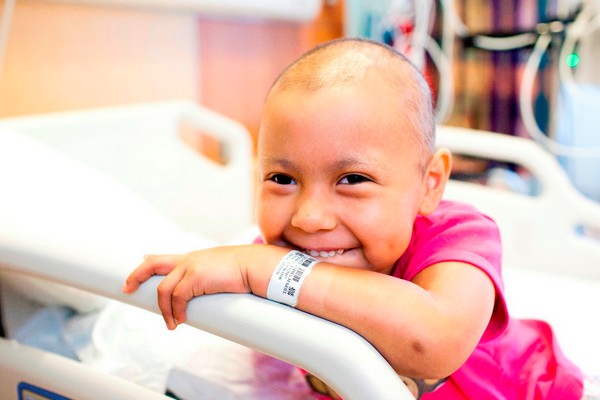As recently as 30 years ago, youngsters with leukemia or other types of cancer had little hope of surviving. But thanks to research breakthroughs that have led to an array of effective therapies, four out of five children with cancer today will beat their disease.
And as added dividend, many of the advances achieved in pediatric oncology have led to more effective treatments of cancers that afflict adults.
Combination therapies have helped children – and adults
Back in the 1960s and early 1970s, oncologists first began using chemotherapy agents to treat children with leukemia, a disease that had extremely high mortality rate at that time.
It soon became clear that one drug for a patient was not enough. So doctors started experimenting with the use of several drugs together.

This treatment innovation was a major step in the battle against childhood leukemia. But even more importantly, it led to changes in the way oncologists treat adult cancers.
More recently, oncologists treating children with bone cancers discovered that a combination of surgery and chemotherapy have dramatically improved the survival rates of their young patients.
This pioneering approach also has proven to be a successful strategy in treating adult cancers.
Differences and similarities in childhood and adult cancers
Pediatric and adult cancers share a couple of common traits: uncontrolled cell growth and the ability of these cells to spread to others areas in the body.
Despite these similarities, not all cancers are alike.
For instance, most childhood cancers stem from abnormalities in critical developmental pathways. This may be one reason why the incidence of pediatric cancer is relatively stable – each year approximately 150 out of every 1 million children under age 20 are diagnosed with cancer.
But in adults, researchers now believe it is often the body’s genetic response to chronic damage from carcinogens such as cigarette smoke that leads to creation of immortality-seeking cancer cells that can turn deadly. By avoiding these harmful carcinogens, individuals can lessen their risks of cancer.
The value of clinical trials
One reason so many advances have been made in treating pediatric cancers is that a large number of children with these diseases take part in clinical trials of new medications. That is typically not the case for adult cancers.
Between 65 and 75 percent of children with cancer take part in clinical trials in North America. In adults that percentage tends to be between 3 and 5 percent.
Challenges remain
Despite the impressive progress that has been made, childhood cancers remain a formidable foe. Too many parents still receive the dreaded news that their son or daughter has a life-threatening condition.
According to experts, about 15,000 children and adolescents a year in the United States are diagnosed with cancer. Cancer kills more children than any other disease. This year more children will die of cancer than asthma, cystic fibrosis, diabetes, AIDS and congenital abnormalities put together.
The most important message for patients and their families to remember: Never give up hope. Parents of children diagnosed with cancer can visit the National Childhood Cancer Foundation to learn more.